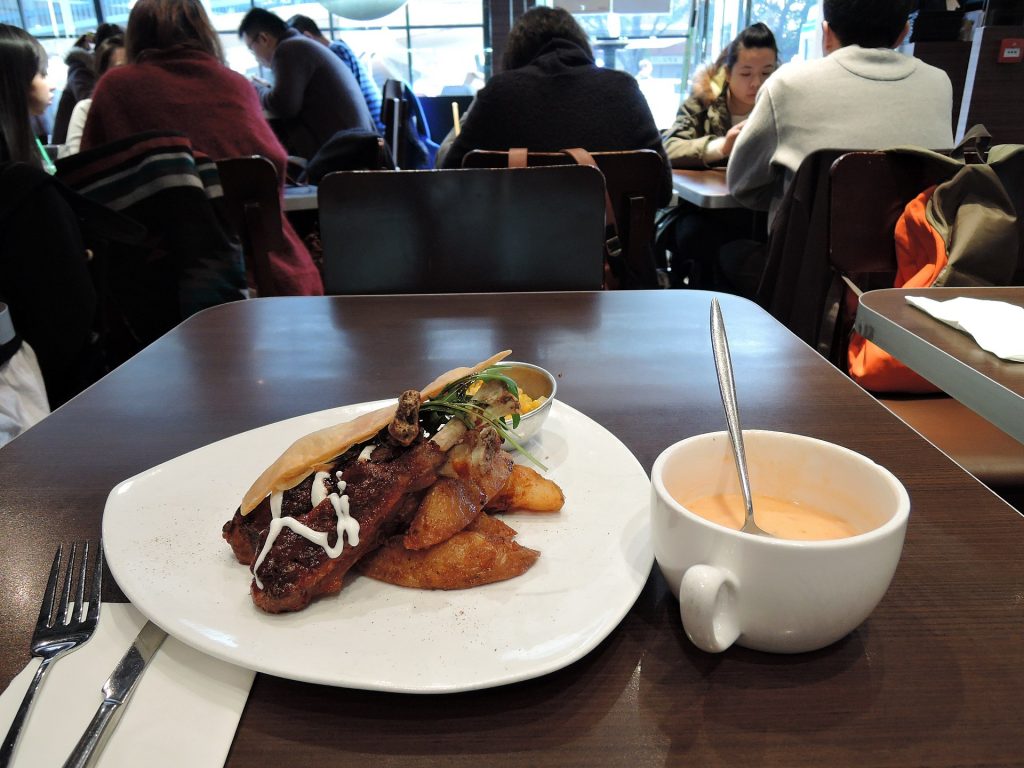
(Wikimedia Commons/Peachyeung316)
The high school I graduated from in Indiana consisted of a two-period, 45-minute lunchtime block. We had a number of lunch lines but people in them were never evenly distributed, resulting in lines that went up the stairs and through the doors. My friends and I complained frequently. When more than half of that time is spent waiting, the remaining time to eat becomes close to none.
Many fast-food chains have capitalized on low budgets for school lunches at public schools, offering cheap, unhealthy food items to feed students. However, brands like Domino’s, Pop-Tarts and Cheetos should neither be staples in children’s diets nor should they be promoted as appropriate foods to eat every day.
School lunches are encouraging students to develop poor eating habits and eat highly processed foods without concern for their nutritional health. The U.S. Department of Agriculture (USDA) has taken admirable steps to set new standards that reduce the amount of sugary, processed and fatty foods, but schools and corporations continue to skirt those rules to match their agenda. Instead of offering fruits or vegetables, frozen juice desserts can satisfy the requirements. Similarly, the 2 tablespoons of tomato paste on pizza slices somehow also count toward a serving of vegetables. Industry giants are prioritizing themselves over the health of students, further exposing the pitfalls of privatized corporations in the U.S.
Sure, the onus may be on students to choose healthier foods, but often those are the foods with more fibrous textures and harder to chew and digest in the time they are given. Thus, the root of unhealthy lunch items stem from the lack of time students have to eat. When students spend most of their time in line waiting for food, they consume fewer calories and less nutrients. Extending lunch times has a number of benefits, directly contributing to better academic performance and diet quality. For low-income students, school meals account for nearly half of their daily caloric intake. Unfortunately, they are unable to compensate for the lack of nutrition outside of school and are reliant on a school system that is failing them in more ways than one.
Longer lunch times can be beneficial in other ways like reducing food waste and giving students a chance to relax as well. National K-12 lunch food waste accounts for $1.2 billion a year. Giving children more time to eat can allow them to finish their food, decrease food waste and lessen its impact on the environment. Additionally, lunch time is a valuable period of time during the school day for students to socialize with friends or talk to people who are not in their classes.
Eating on a restricted schedule also causes people to eat faster, overfilling their stomachs past the point of satiety, since it can take up to 20 minutes for satiety hormones to release and tell your brain you’re full. As a result, kids who do not have enough time to eat can either be prone to obesity or malnutrition due to throwing out the leftover food on their plates.
Just like students, teachers struggle to find time to eat as well. To be in compliance with the Education Law, teachers should be taking breaks for at least 30 minutes. But while students are off on their supposed lunch breaks, teachers spend this time helping students, planning for their next class or handling any existential circumstance that might have come up.
Of course, reasonably implementing longer lunch times is challenging. Schools with too many students or small spaces to eat cannot always carve out enough time in the school day to logistically get everyone in and out and still keep up with a rigorous academic setting. Improving on the existing system is long overdue — whether it means elongating the school day or offering teacher reimbursement for the longer working hours — it’s time for us to put students and teachers at the forefront of education in every aspect.
Sophia Ling (24C) is from Carmel, Indiana.
Sophia Ling (she/her) (24C) is from Carmel, Indiana and double majoring in Political Science and Sociology. She wrote for the Current in Carmel. She also loves playing guitar and piano, cooking and swimming. In her free time, she learns new card tricks and practices typing faster.




